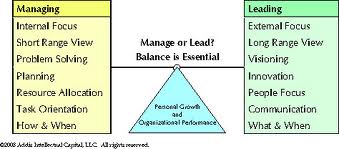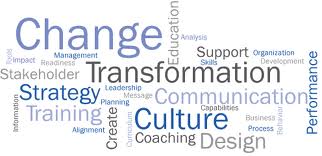Dani Robbins is the Founder & Principal Strategist at Non Profit Evolution located in Columbus, Ohio. I’ve invited my good friend and fellow nonprofit consultant to blog this week about board development related topics. She also agreed to join the DonorDreams team and contribute a board development post every month. Dani also recently co-authored a book titled “Innovative Leadership Workbook for Nonprofit Executives” that you can find on Amazon.com. I hope you enjoy the genius musings of my friend for the next few days . . .
 Congratulations for being named Board President! You are going to be great! I am so honored that you turned to me for some suggestions as to your responsibilities. Thank you.
Congratulations for being named Board President! You are going to be great! I am so honored that you turned to me for some suggestions as to your responsibilities. Thank you.
In a nut shell, your job is to:
- lead the board by inviting participation of board members;
- guide evaluations of the organization, executive director and the board;
- facilitate communication among the board and between board and staff;
- delegate authority;
- raise funds and support resource development efforts; and,
- maintain visibility in the community.
That is the big picture of the job. How that translates into actual work is this:
President/Chairs lead meetings by following the meeting agenda, making it critical to have an agenda. When you chair the meeting keep the conversation on point, if it veers off point, call the question, table any motion and/or send the issue back to committee for further discussion. Do not let the board meeting became a committee meeting, but do encourage all interested parties to attend the next committee meeting to further discuss the issue. This will promote the engagement of those who are passionate about the issue, and continue the engagement of those who are not.
The Board President appoints committee chairs and holds them to account, ensures conflict of interest policies and other policies are upheld by Board members, and supervises and evaluates the Executive in concert with or on behalf of the Board. President’s chair meetings, but do not vote or make motions. They only vote to break a tie. They do steer the conversation, share their opinions and keep the group on task.
 The Board is responsible for governance, which includes mission, vision and strategic planning; hiring, supporting and evaluating the executive director; acting as the fiduciary responsible agent, setting policy and raising money. Everything else is done in concert with the executive director or by the executive director.
The Board is responsible for governance, which includes mission, vision and strategic planning; hiring, supporting and evaluating the executive director; acting as the fiduciary responsible agent, setting policy and raising money. Everything else is done in concert with the executive director or by the executive director.
When you become Chair sit down with the executive director and map out your goals for your term. Discuss how you and the Board will be evaluating him/her and by what measurement you will gauge his/her success. Check in on when the last time the board reviewed the mission and vision of the agency. If it’s been a few years, consider a Board retreat to revisit, revise or recommit. Please also discuss how you like to be contacted and set a plan to meet twice a month to discuss relevant issues, problems, and successes as well as progress toward your goals and/or the strategic plan. Be prepared to take calls in between should something come up – because something always comes up.
Board President’s have a lot of power. Use that power wisely. If you ask for something, the staff will drop whatever they are doing to get it for you. I would hope that they will be comfortable enough with your leadership to explain the price of what they are dropping, but it is likely they won’t. In fact, I recommend you don’t go to the staff at all and instead work through the executive director for whatever information you would like. If it is not feasible to go through the executive director, then please ask via email and cc the Exec. S/he cannot be held accountable for managing a staff that are getting directions from others, and the staff will become confused as to from whom they take direction and who’s direction takes priority.
On behalf of executive directors everywhere, I ask you to please remember that they are the CEO of the company, and not a department head. You are the Chair of the Board, which is responsible for governance. S/he is the leader of the agency and responsible for everything else.
 I encourage you to review Robert’s Rules of Order and follow the entire procedure for votes including asking: All in favor? Any opposed? Any abstentions? Don’t leave out the last two. In addition to alienating whatever Board members wanted to go on record for opposing or abstaining, it will make future challenges more difficult to defend. The following need votes:
I encourage you to review Robert’s Rules of Order and follow the entire procedure for votes including asking: All in favor? Any opposed? Any abstentions? Don’t leave out the last two. In addition to alienating whatever Board members wanted to go on record for opposing or abstaining, it will make future challenges more difficult to defend. The following need votes:
- Any Policy – crisis communication and management, personnel, etc. (Procedures do not need votes. Think of it like the difference between the rule and the law.);
- Past board meeting Minutes;
- Financial reports;
- Agency Annual Budgets;
- Plans – strategic, board development and/or resource development;
- Changes to the strategic direction of the organization;
- The hiring of an Executive Director;
- Campaigns;
- Opening, closing or changing the signatures on bank accounts;
- Changes to the mission or vision; and Board Members and Officers being added, or renewed.
Resignations can be noted in the minutes and do not require votes.
Please also review your agencies by-laws, also called the Code of Regulations. All valid votes require a quorum of Board members to be in the room (or on the phone if your by-laws allow) – usually ½ of the board, but your by-laws may require more, or possibly less. You can start a meeting without a quorum, but cannot vote until a quorum has been reached.
Lastly, I encourage you to plan your year, structure board meetings to align with strategic goals, and to frequently remind board members of the mission of the agency.
























